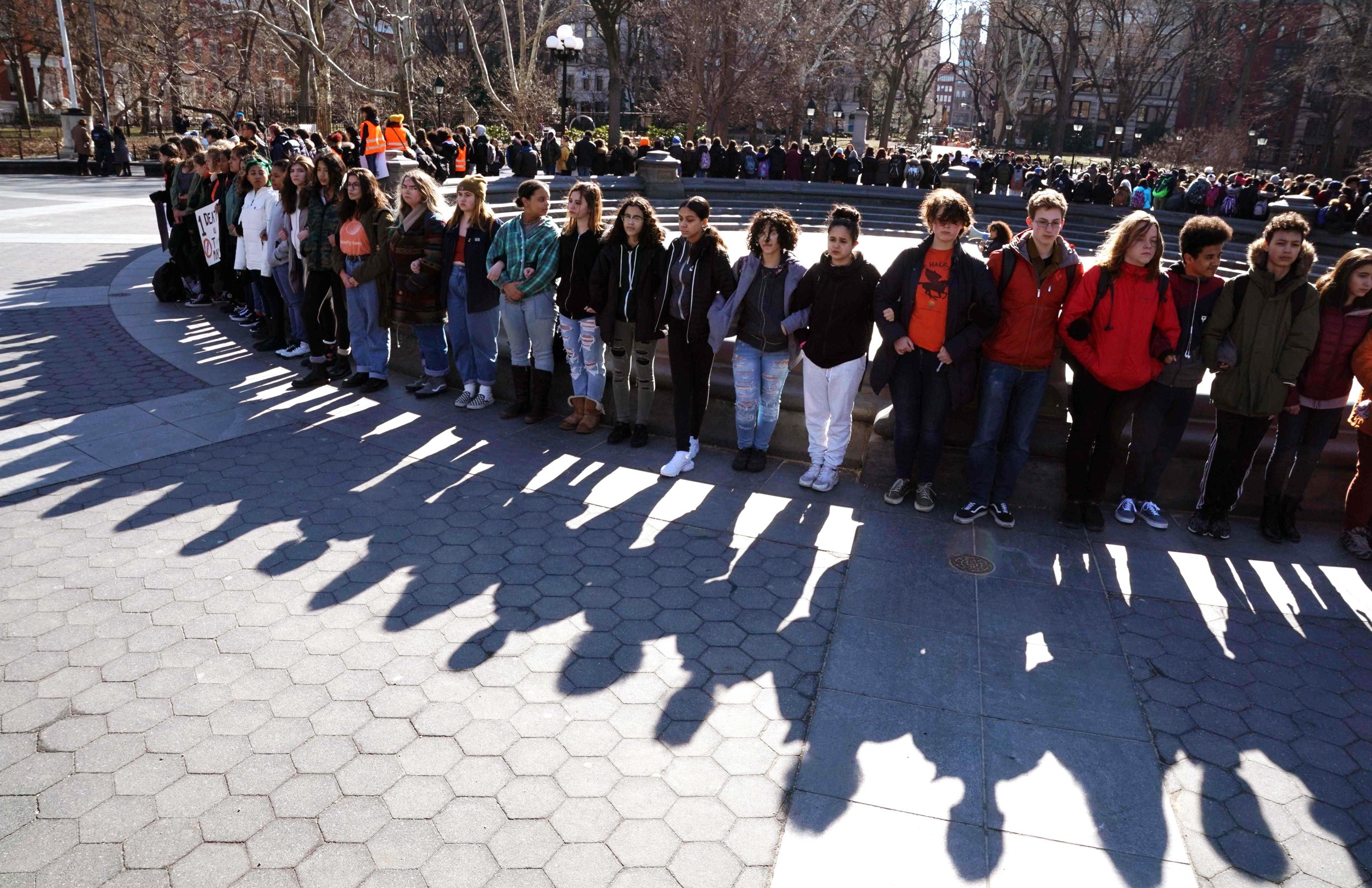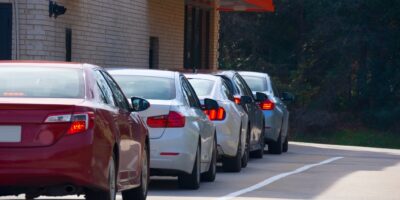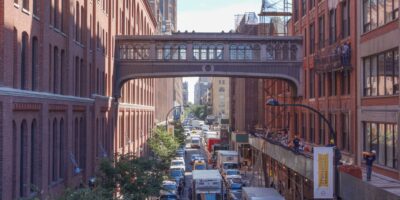The Real Walkout Issue: Compulsory Schooling
Are these school walkouts really about gun control? Or is there something else going on? Perhaps we are starting to see a breakdown in the consensus over compulsory schooling itself. It’s about time. At the very least, the idea of home schooling and other alternatives to conventional public school have received a huge boost in recent weeks.
Every parent hopes for his or her child to grow up in a world without violence or the threat of violence. This is because parents know that the prospect of violence against children is a force that shatters innocence and introduces an element of terror into the young mind, distracting a child from the path of self-improvement and shattering hopes of a good life. That the threat of violence has been become part of the daily fears of tens of millions of American kids is a ghastly tragedy.
The numbers tell the story. According to the Educators School Safely Network, reports the New York Times, in the five months from August to December 2017, there were at least 671 bomb or gun threats in American schools. Since the Parkland shooting, there have been more than 465 bomb or gun threats or both. These threats, plus drills to deal with the prospect, have become a common experience for kids in schools all over the country.
Then there are the student walkouts, which are unprecedented in their scale and intensity. All over the country, in state after state and city after city, students have picked up their books and headed out the door in protest. Yes, they come back but the idea is to put authorities on notice: we have power in numbers and we won’t live in fear. Detentions have been imposed as punishment.
The reason is being politicized by the national press, of course, as if this is really just a protest against the right to buy and own guns. It’s as if reporters could not even imagine another reason. More cynically, the press is merely using the students to push a predictable agenda.
Why Protest?
Gun control aside, the core of what the students are doing should elicit our sympathy. They are afraid. They are afraid of getting shot. They are afraid of losing their lives. In school. In their own schools.
Day-to-day, the kids know that violence is a threat. Authorities these days are super skittish. The slightest evidence of a problem results in panic. And there are more than enough trolls out there, looking for some way to feel actualized in their influence on the world, who are ready to provide just such evidence. The result is a stream of drills and false positives. The NYT provides the following testimony from a student in San Diego.
I was sitting in Physics last year when suddenly, we heard, “This is a lockdown, this is NOT a drill.” We calmly crawled under the desks, not thinking too much of it. And then rumors started flying on social media.
The general conclusion was that someone had a gun in their backpack, and that a kid saw and reported it. The thought of a possible shooting made me nauseous.
Our substitute teacher could not figure out how to lock the doors. Kids started making jokes out of the situation, and we were instructed to put our phones away. All I could think was, “I can’t believe my biggest fear could possibly come true in this moment.” I texted my parents that I loved them.
It’s an isolated statement but represents the feelings of so many these days. After the Florida shootings, I recall listening to National Public Radio, and they were following the experiences of a family. The child did not want to return to school. The mother told her: “You have no choice.” Interesting choice of words. Behind them was the terrible reality that the mother had no choice either. Keeping the kid out of school would be aiding truancy and run afoul of the authorities.
This is a point that, so far as I know, has not appeared in a single article or commentary on the school shootings or the walkouts. It is this: they are forced to be there. An apparatus of legal compulsion is in place – one that is rarely questioned – that forces the kids to put themselves in harm’s way.
It’s Compulsory
This is the great unmentionable fact in all this debate about school shootings. The kids are being forced into institutions that have proven themselves unable to protect students against violence, and also face no real accountability when they fail to do so. Force is the watchword even without the direct threat of violence from guns and bombs.
Why does nearly everyone think this is normal? Because compulsory schooling laws have been part of the living reality of every single living American. When the last generation that knew a different reality died out, it was forgotten that it was not always this way. Children were both banned from work and forced into school in the 18th and 19th centuries in the United States. Parents wanted their kids to be educated and found a way. But force was not part of the equation.
In most states, compulsory schooling laws came about in the 1880s and after. It was part of the panoply of Progressive Era reforms that massively expanded state control over people’s lives. Consider all the new programs: income taxes, central banking, inheritance taxes, nationalized land holdings, passports, marriage laws, minimum wage and maximum wage legislation. Compulsory schooling laws were part of the mix. The last state to adopt them was Mississippi in 1918.
You might think that such laws came about to make sure that kids could develop great minds and live good lives. This was not the motivation. The great English philosopher Herbert Spencer (as quoted by Murray Rothbard), a 19th century paragon of liberal thought, explained
“For what is meant by saying that a government ought to educate the people? Why should they be educated? What is the education for? Clearly, to fit the people for social life—to make them good citizens. And who is to say what are good citizens? The government: there is no other judge. And who is to say how these good citizens may be made? The government: there is no other judge. Hence the proposition is convertible into this—a government ought to mold children into good citizens…. It must first form for itself a definite conception of a pattern citizen; and, having done this, must elaborate such system of discipline as seems best calculated to produce citizens after that pattern.” (The entire section of Social Statics (1851) is worth reading.)
The opinion that no truly free society should ever compel education, much less force kids into public institutions, was once widely shared among all liberal intellectuals. Spencer compared forced education to forced religious adherence: the means are fundamentally incompatible with the stated goal. You can’t force faith and you can’t force education, and the attempt introduces grave dangers to the commonwealth.
No Market, No Responsibility
There is an additional problem here related to liability when something goes wrong. No superintendent, no police commissioner, no school board president, no principal, has faced any financial repercussions for school shootings, simply because they bear no liability whatsoever for the fate of the kids under their control. This is completely unlike, for example, a shopping center, bank, church, or private club, all of whom face a complex system of insurance and legal agreements that govern their policies and approaches to security. Indeed, it should surprise no one that private schools have been generally safer than public schools.
More than a century ago. American public authorities decided to remove the service called education from the realm of voluntary market action and imposed upon it a central plan backed by force of law. As with all forms of central planning today, it is coming under strain as people are innovating around these old systems and even revolting against them.
Now even the students themselves are asking the core question: are my human rights being violated by being forced daily into a place where the threat of violence is real and where public authorities cannot be relied upon to protect me? This country has a tremendous tradition of protesting for human rights. Maybe it is time my voice is heard. Maybe it is time that I do something.











